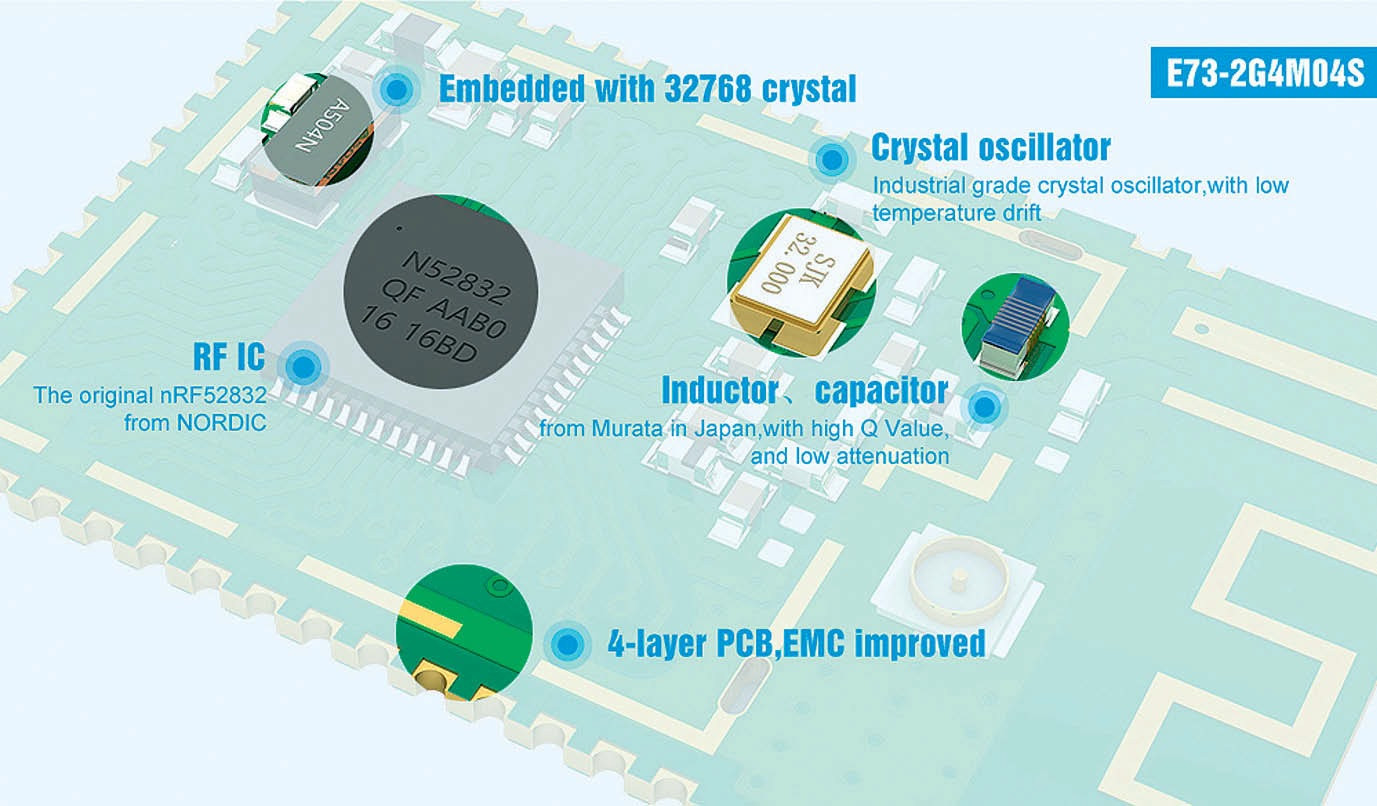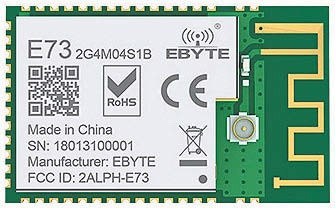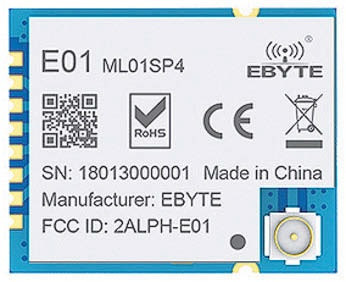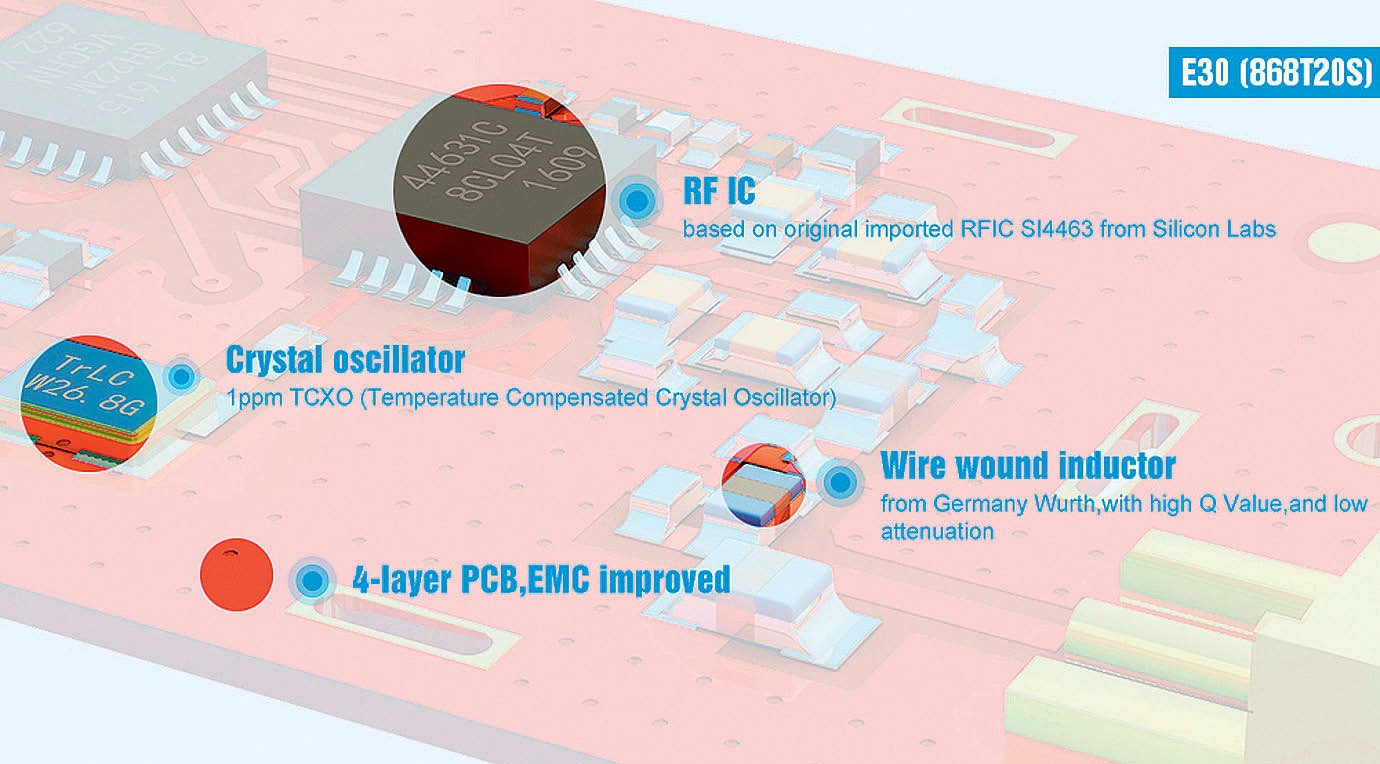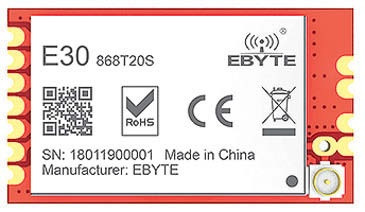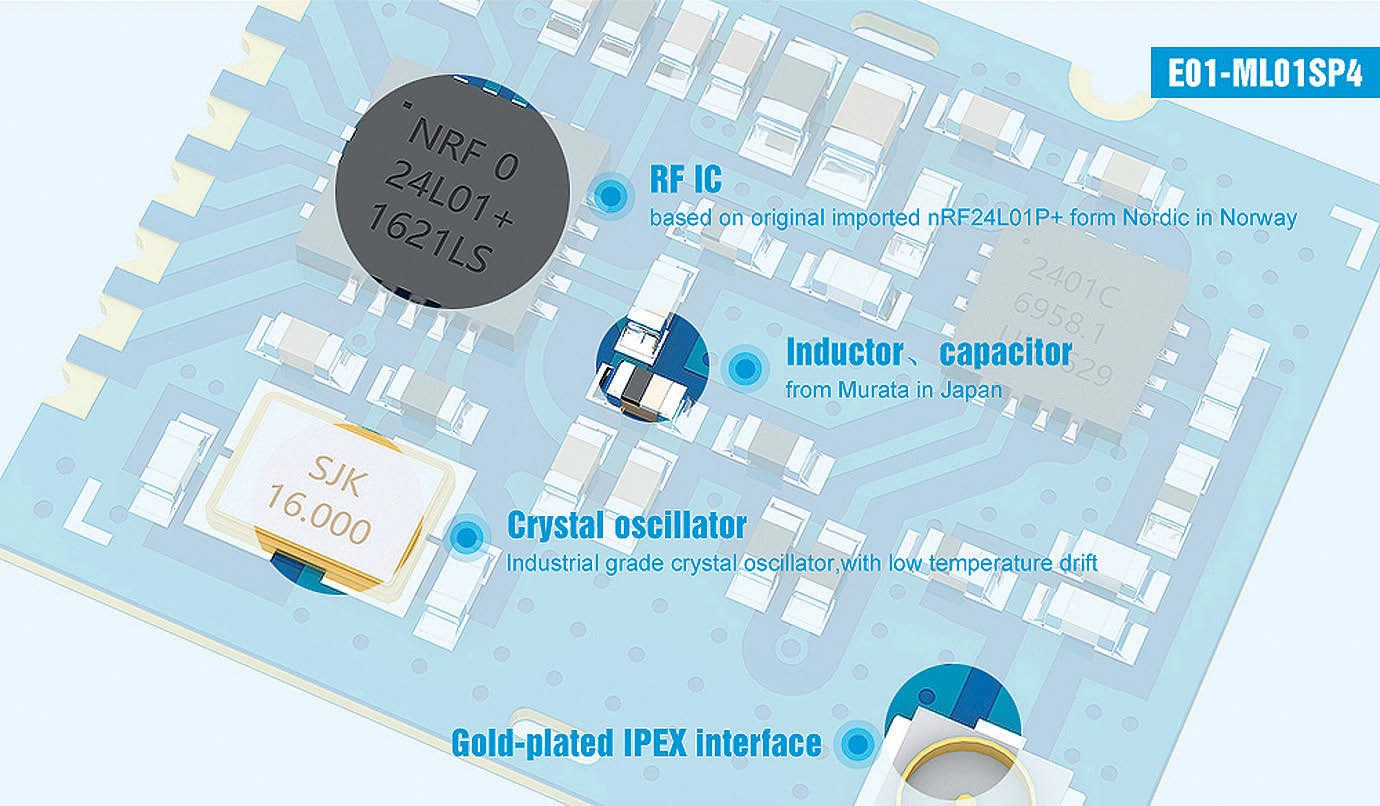Ebyte communication modules
 |
|
|
Ebyte communication modulesEbyte is a Chinese producer of IoT components that focuses on high-end communication modules. It has been operating since 2012. For almost 7 years it has gained a good reputation not only in Asia, but also in western countries. Right now, Ebyte modules for radio communication can be purchased in Poland, at Micros. Chengdu Ebyte Electronic Technology Co. Ltd. is a company that has already developed hundreds of products, mainly various communication modules. Ebyte uses integrated circuits (from companies like Nordic Semiconductor, Texas Instruments, Semtech, Silicon Labs or Dialog Semiconductor) in its modules. Ebyte modules are designed for both industrial and consumer use. LoRa modulesIn the offer you can find three different LoRa modules (based on Semtech IC’s). They differ from each other in dimensions, operating frequency etc. The E19-868M20S module is based on the Semtech SX1276 system and works in the 862 to 896 MHz band. It has a power of 20 dBm, and its sensitivity is -147 dBm. These parameters allow for data transmission up to 5 km. The module is controlled via the SPI interface and has 21 pins, it is supplied with the voltage from 1.8 to 3.6 V. The dimensions of the module are 25.2×17.6×3.5 mm. The E32-868-T20S module was also based on the Semtech SX1276 system. It works at the same frequencies and has the same power as the E19-868M20S (but with a slightly less sensitive receiver (–146 dBm)) and requires a different power supply (2.3 to 5.2 V). As a result- range is also limited (to approx. 3000 m). The module has 22 outputs, with dimensions of 26×16×3.23mm. It is controlled by the UART interface and is equipped with an I-PEX connector. The third LoRa module uses the Semtech SX1262 IC (therefore works in the 850 to 930 MHz band). It differentiates from other modules with high power of the transmitted signal (up to 22 dBm), but a lower sensitivity of the receiver (–138 dBm). Nevertheless, it also allows to communicate up to 5 km. It requires a power supply from 3.3 to 5.5 V, is controlled by UART, and also has an I-PEX socket. The 22-pin SMT housing has dimensions of 26×16×3.15 mm. All three Ebyte modules are adapted to work in a very wide temperature range, from –40 to + 85 ° C. Bluetooth modulesThere are two Bluetooth modules which you can find in the offer. They differ from each other by the manufacturer of the integrated circuit and the supported version of the radio protocol. First module is an E104-BT02. It was built on the DA14580 chipset, from Dialog Semiconductor. It works with the Bluetooth 4.2 (BLE) protocol and has a built-in antenna on the PCB (transmission power- 0 dBm). The sensitivity is at –93 dBm level, which (under ideal conditions) allows for communication at a distance of 70 m. The module is controlled by UART and requires voltage in the range from 2.35 to 3.3 V. The SMT housing has 20 pins and dimensions of 21.9×14.6×2.3 mm. E73- 2G4M04S1B is the second Bluetooth module. It works on the nRF52832 system from the Nordic Semiconductor. This module supports Bluetooth 4.2/Bluetooth 5.0 (BLE) protocols. It has a built in antenna, but you can also connect an external one (by using the I-PEX connector). High transmission power (4 dBm) and higher sensitivity (-95 dBm) allow for a longer communication range (up to 100 m). This module requires voltage in range from 1.8 to 3.6 V. The SMT housing has 44 pins and dimensions of 28.7×17.5×2.6 mm. Both modules can work in temperatures from –40to + 85°C. ZigBeeE18-MS1PA1-IPX is based on the Texas Instruments CC2530 chip. It operates at frequencies from 2.4 to 2.48 GHz. The transmitting power is 20 dBm, and the sensitivity is –97 dBm, which theoretically allows communication up to 1 km. The module requires a voltage supply in the range from 2 to 3.6 V. The SMT housing has dimensions of 22.5×16×2.4 mm, 24 pads and an I-PEX socket (for connecting the antenna). Like the previously described modules, it can operate in temperatures from –40 to +85°C. Other ISM modules The Micros can also offer you three other types of radio communication modules, produced by Ebyte. First of them is the E01-ML01SP4, based on the nRF24L01P chip from Nordic Semiconductor. It works in the 2400-2525 MHz band. The transmitting power is 20 dBm, and the receiver sensitivity is –106 dBm. This allows to communicate at a distance of up to 1800 m. The antenna is connected via the I-PEX connector, and it is controlled via the SPI interface. The SMT housing has 8 pads and dimensions of 18×14.5×2.4 mm. The supply voltage must be between 2 and 3.6 volts. The second universal ISM module is based on the SI4463 chipset from Silicon Labs. It works in the 855 - 880.5 MHz band and transmitting power is 20 dBm. The receiver sensitivity reaches to –121 dBm. Good parameters allow (in ideal conditions) to obtain communication at a distance of 2500 m. The module has an I-PEX connector, 11 pins and dimensions of 30×17×3.5 mm. Control is via UART, and the required supply voltage is in the range from 2.3 to 5.2 V. The third module works under the control of the CC1310 chipset from Texas Instruments. It supports the 431-446.5 MHz band. Its transmitting power is 14 dBm, and the receiver sensitivity is -108 dBm. The communication range reaches to 1500 m. Antenna is connected via the I-PEX connector, and the control is via UART. The supply voltage is from 2.1 to 3.8 V. The dimensions of the 24-pad SMT housing are 20×14×2.57 mm. All these modules can also operate in temperatures range from –40 to +85 °C. Summary Even a quick overview of the selected modules from Ebyte shows that the company, not only cooperates with many different large manufacturers of radio systems, but also has really wide offer in many areas of application. Detailed and up-to-date documentation is available for all modules. The producer also provides documentation of the testing procedures that the offered modules are subjected to. Source: "Elektronik" 2019/03, s. 44-45. |
|
| We invite you to familiarize yourself with the full offer of Ebyte communication modules: CLICK HERE | |
